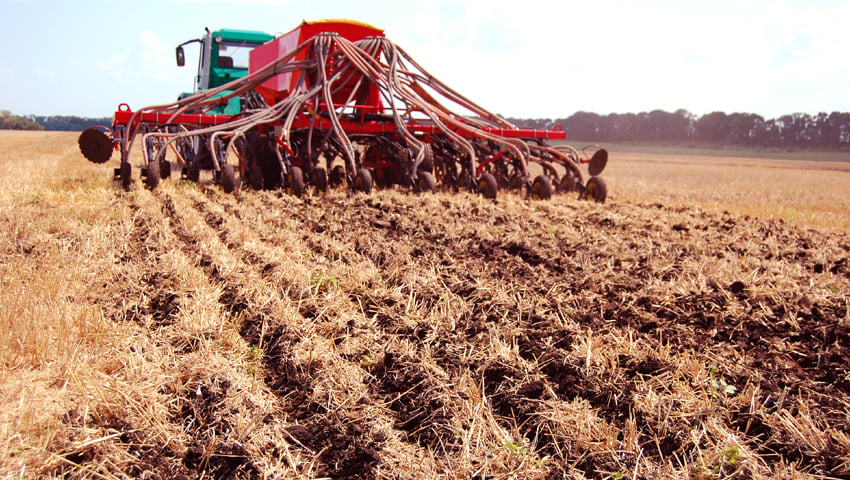A ban on the controversial herbicide glyphosate could lead to an increase in weed abundance and a decrease in the yields of some crops, according to a new modelling study. Although the environmental risks associated with this herbicide would be eased, alternative approaches to weed control had mixed outcomes for the environment, food production and profitability, although some show potential benefits.
Weed communities with evolved resistance to non-glyphosate herbicides were not projected to be disproportionately affected by removing glyphosate, despite the lack of alternative herbicidal control options.
Overall, the Rothamsted study team said that they hope the modelling exercise will encourage more farmers to experiment with alternative weed control strategies.
Rothamsted’s Dr Helen Metcalfe led the study. She said, “Our findings emphasise the need for careful consideration of trade-offs if a ban were to be enacted. Glyphosate, the most widely used herbicide, is linked with environmental harm and possible human health issues, but it’s use is central to no-till farming approaches. Public pressure is now building for it to be replaced in agricultural systems. We wanted to find out what the implications of a ban might be.”
The treatment is widely used in arable farming, but in regenerative systems focussed on improving soil health in particular, glyphosate is important for weed control in no-till stubbles and the management of cover crops and leys. The environmental and health issues associated with glyphosate may trade-off against some of the benefits of moving to more sustainable systems that reduce tillage and integrate cover crops.
The study team modelled the impacts of discontinuing glyphosate use and replacing it with alternative control methods for controlling weeds based on winter wheat arable systems typical in northwest Europe.
- Crop rotations with more spring cereals or grass leys for weed control increased arable plant diversity compared to simpler rotations using glyphosate but produced less food.
- An increase in spring cropping also increased environmental risks associated with herbicides due to the high toxicity and bio-availability of chemicals typically applied in these crops.
- Stale seedbed techniques such as delayed drilling and opting for ploughing instead of minimum tillage had varying effects on weed abundance, food production and profitability. Ploughing was the most effective alternative to glyphosate for long-term weed control while maintaining production and profit.
Dr Metcalfe said, “Integrated Weed Management with more use of cultural control methods offers the potential to reduce chemical use but is sensitive to seasonal variability and can also have some negative environmental and economic impacts. The uncertainty associated with the non-chemical approaches we tested supports the view that adoption of IWM requires multiple options adapted to the local environment. This will however require careful consideration and a strong founding in the principles of weed ecology and biology.”
In the study, introducing more grass leys or spring cereals into the crop rotation inevitably led to a decrease in food production due to the replacement of high-yielding crops with less productive alternatives. Whilst in some cases the additional benefits of these diversified systems may outweigh the loss of food production, there may also be additional avenues to increase productivity in these systems. For example, the addition of grazing animals to grass leys will not only provide additional revenue sources but may also improve soil structure and nutrient cycling.
The study team expected to observe weed control benefits of adjusting the crop rotation, yet these did not consistently materialise in the simulations. It was anticipated that the introduction of crops with very different management techniques to typical winter cereals would have allowed weed abundance to fall. This is because the management operations required for these alternative crops will select a different weed community to that which is adapted to winter cereals.
Dr Metcalfe said, “Although we saw increased environmental risks related to herbicides used in spring crops, the benefits of spring crops in improving biodiversity in general are clear. For instance, overwinter stubbles from spring cropping provide conditions for the germination of crucial winter food sources for seed-eating birds. In addition, spring crops themselves can provide breeding habitats and food sources for farmland birds. It is therefore important to consider these trade-offs when implementing such a strategy on farm.
“Many farmers are beginning to investigate how they can best control weeds with fewer herbicides. Simulation studies like this one can help to carefully assess any management changes, as it is not always possible to predict outcomes when so many variables – including the weather – are playing a key role.”
